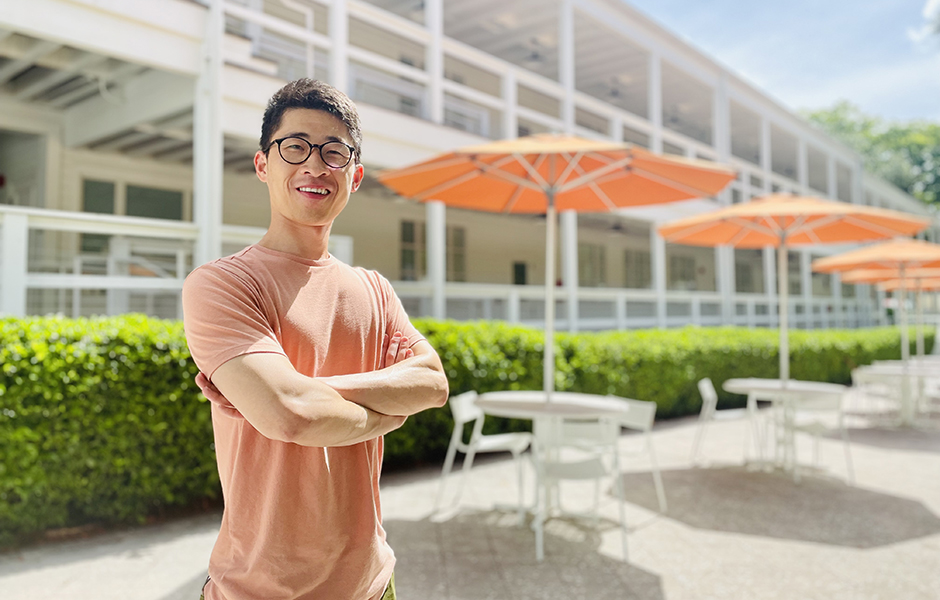Assistant Professor Haoluan Wang is one of many new faculty members joining the College of Arts & Sciences this fall semester. As a sustainable economist, Wang will contribute his scholarship and expertise to the Department of Geography and Sustainable Development. Wang earned his Ph.D. in Agricultural & Resource Economics from the University of Maryland at College Park and is the author of many peer-reviewed studies on natural resource economics and climate adaptation.
A&S News connected with Wang to learn more about his research and collaborative projects, and why students should truly understand the importance of sustainable economics when addressing today’s most challenging global issues.
A&S News: How would you explain your research?
Wang: My research centers around the role of economic policy instruments in sustainably managing the environment and natural resources. I apply principles of economics, design surveys and experiments for data collection, combine large administrative and geospatial data for empirical analysis, and propose relevant policy recommendations.
A&S News: Your scholarly interests span from climate adaption to natural resource economics and spatial modeling. Can you tell us why you chose these specific fields of study?
Wang: As a fan of outdoor activities, I always feel a deep connection with nature. Since most natural resources are spatially dependent, it is essential for us to use spatial modeling as part of the analytical tools. My research interest in climate adaptation stems from the perspective of how policymakers can take actions to sustainably manage the environmental and natural resources. Miami is one of the best places to study climate adaptation given the increasing threat from sea-level rise and natural disasters.
A&S News: Why did you decide to join the College’s Department of Geography and Sustainable Development and what do you hope to add to the faculty research?
Wang: Although I am an economist by training, my research relies heavily on using remote sensing data and spatial modeling to explore questions at the intersection of geography and economics. I hope to use my unique background to contribute to the department’s growing interest in sustainable development. Secondly, most of my work is highly policy relevant and I enjoy working on projects that will lead to meaningful policy implications. This fits into the department’s mission of communicating results to policymakers and practitioners. Finally, I have extensive experience in working with interdisciplinary teams on multiple research projects. I highly value this experience and that is why I am particularly excited about the diverse background in the department.
A&S News: What do you think your students need to know about sustainability development/economics that they may not already be learning in the classroom?
Wang: I want my students to think that sustainable development/economics is the interaction between human decisions and natural systems in a dynamic framework. Both components can receive feedback from each other and can influence each other. From an economist’s perspective, we emphasize how government policies can be designed to achieve the goal of sustainable development by considering the feedback from both components.
A&S News: Are you working on any current projects?
Wang: My current research portfolio consists of three separate projects. First, I explore how decentralized climate adaptation to natural disasters such as flooding can induce transboundary spillovers that lead to policy inefficiency. Specifically, I focus on levee building in the Mississippi and investigate how upstream levee construction forces downstream to build higher levees for self-protection. My second project (working with my colleagues at the University of Maryland), I explore how government agencies can design more cost-effective subsidy programs to incentivize landowners’ provision of ecosystem goods and services on working farmland. Lastly, I am working with my colleagues at the U.S. EPA combining spatial modeling and non-market valuation techniques to provide a better understanding of the spatial distribution of welfare impacts of environmental improvement.
A&S News: Do you have any collaborators from other disciplines?
Wang: Much of my research is interdisciplinary. I am currently working with biologists, ecologists, hydrologists, geographers, and urban planners from multiple universities in Germany, the UK, and the U.S on several research projects. Working with multidisciplinary teams not only makes research more exciting but also helps me think outside of the box and grow as a scholar.

